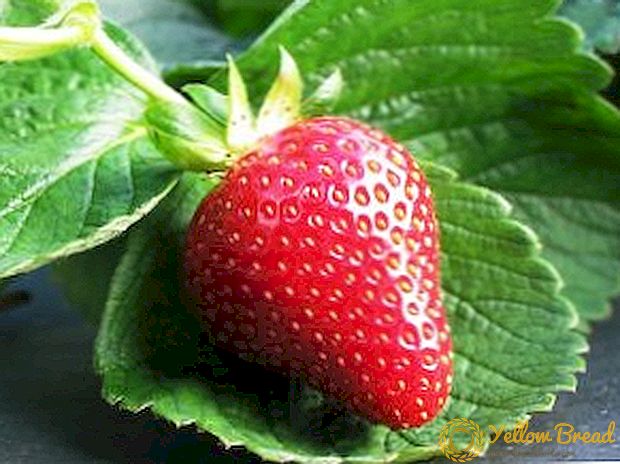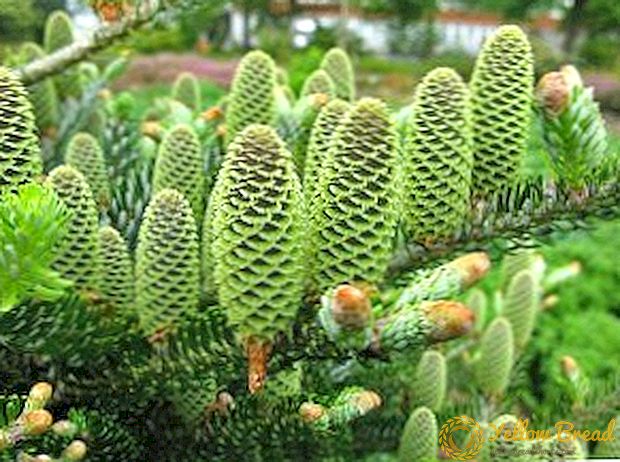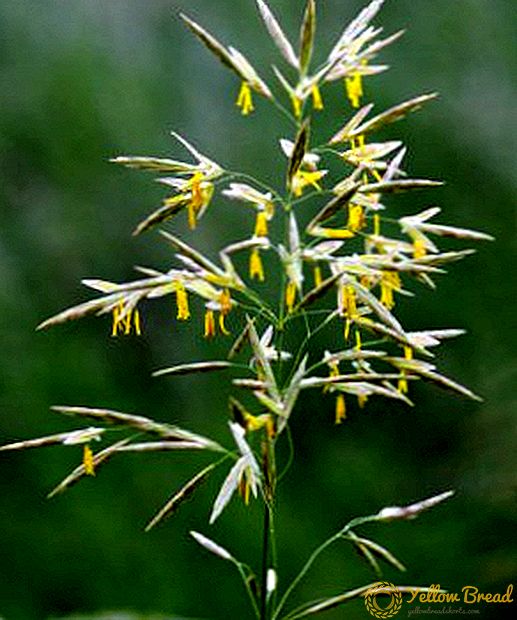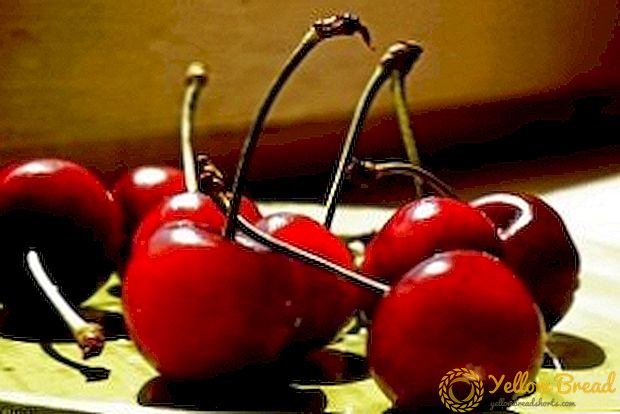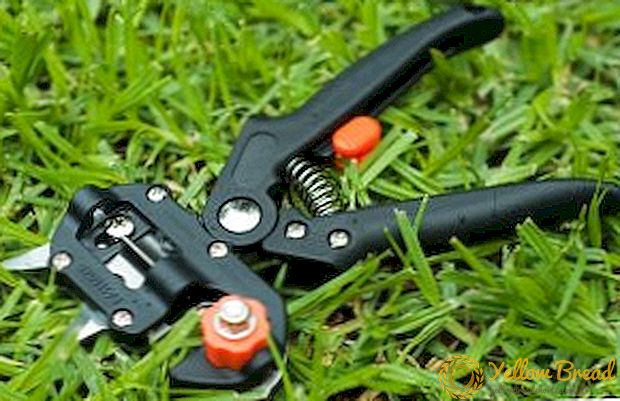 Pepper - one of the first vegetable crops which gardeners planted for seedlings. This is due to the long vegetative period and the ripening period of the fruits of this southern plant.
Pepper - one of the first vegetable crops which gardeners planted for seedlings. This is due to the long vegetative period and the ripening period of the fruits of this southern plant.
One of the constant questions that concern summer residents is whether to soak pepper seeds before planting or sow them immediately in the ground? From the correct preparation before germination depends on the end result - yield.
- Is it necessary to soak pepper seeds before planting, and why do they do it
- The main stages of the preparation of pepper seeds
- Calibration
- Pickling
- Processing with microelements and growth stimulants
- Soak
- Bubbling
- Hardening planting material
Is it necessary to soak pepper seeds before planting, and why do they do it
Soak - the process itself is optional, the seed will germinate without it, and it may even give an excellent harvest. This allows supporters of sowing without preparation to assert that soaking is an extra hassle.
Living in warm climatic conditions makes it possible to sow pepper at least immediately into the open ground, it will still be enough time for it to ripen.The residents of the temperate zones value every day, and if there is an opportunity to speed up the process and gain time before the finish, they readily use it, because the pepper ripened on the bush is much healthier and tastier than it came later. In moderate conditions, the seeds of pepper must be soaked, without this procedure, the fruit will not have time to ripen before the onset of frost. 
However, summer residents - residents of warm edges also do not interfere with such a handicap: firstly, the harvest is more abundant, and secondly, it is pleasant when the pepper has ripened ahead of schedule. This applies to both sweet and spicy varieties.
The advantages of soaking seed before planting:
- allows you to win 7-10 days, as the shoots from the treated specimens appear on the 5-7th day, while those sown dry up to 2 weeks;
- makes it possible to select the strongest plants, providing them with immunity, high resistance to diseases and pests and giving the best conditions at the start.

The main stages of the preparation of pepper seeds
Seed preparation begins at the acquisition stage. It is necessary to carefully consider the manufacturer and carefully examine the information indicated on the package, choosing the characteristics of the variety you need. A self-respecting manufacturer indicates how it has been treated. Treated by the manufacturer and the coated seeds should not be subjected to any additional impact, they can only be sown in the ground. It should be noted that, although they will ascend a couple of weeks later, they will eventually catch up with their “relatives” and then overtake them, while they will suffer less from pests and diseases.
It is better to prefer the material of those manufacturers whose compliance with GOST is indicated on the packaging - it is more reliable.
The package should not be any mechanical damage. It is imperative to pay attention to the year of collection of raw materials and the deadline for sowing - this information must be present without fail.
Seeds of pepper, planted in the second year after harvest, lose their germination and yield by half. 
Calibration
Calibration is a seed test for germination. When soaking in saline solution, hollow specimens float, and those capable of germination sink to the bottom.
Before immersing in the solution, it is necessary to visually evaluate the material laid out on paper, and immediately reject specimens that appear to be unsuitable, as well as too small or too large. After that, in a glass of water you need to dissolve a teaspoon of salt (or in a liter of water - 40 g of salt) and lower the seeds there for 3-4 hours. Some gardeners are limited to a few minutes. Floated seeds should be thrown away, and drowned seeds should be dried for further use or sown immediately.
If you bought a bag with ten seeds of rare varieties of pepper, perhaps you should not calibrate them - germination will show it clearly.But personally collected seed, available to you in a decent amount, should be checked in a similar way to immediately get rid of the unusable ballast. 
Pickling
Dressing, or disinfection, is carried out in order to save the prepared raw materials from possible contamination by pathogens that can harm a future plant. At its core, this is disinfection.
Such processing is all the more relevant, the less reliable the source of raw materials. The material of a large company with a reputation may not be subjected to dressing, especially if the package contains information that it has already been carried out. But personally collected, received from friends in exchange, and even more so the seeds bought on the market should certainly be etched.
To do this, use different drugs: potassium permanganate (potassium permanganate), hydrogen peroxide, vinegar, boric acid and even formalin; There are also special drugs that can be bought in the store.Each of these methods has both advantages and disadvantages, and the gardener chooses which one to give preference to. 
Despite the fact that potassium permanganate is not so easy to find on sale, this technique remains the most popular: it has an unlimited shelf life, and it has been purchased for many years ago or on the occasion of a bubble for a very long time.
Some methods of seed dressing:
- Potassium permanganate In dark pink 1% solution, seeds are preliminarily soaked in warm water for 2-4 hours, which can be conveniently placed in a gauze bag and left for 15 minutes, then immediately washed thoroughly under running water and immediately sown or laid out on paper to dry.

- Hydrogen peroxide. The solution for disinfection requires 2-3%, while it must be necessarily heated to 38-40 ° C. Maintain seeds for no more than 7 minutes, rinse thoroughly.

- Boric acid. The drug is diluted at the rate of half a teaspoon of acid in a glass of water. The temperature of the solution is 25-30 ° C, the processing time is 2-3 hours.

- Phytosporin. It is a commercial product containing natural bacteria and fighting against pathogens. It is diluted at the rate of 4 drops from an eye dropper on a glass of water.

Disinfected raw materials can not be stored for longer than a day, it is desirable to immediately plant or begin to germinate.
Processing with microelements and growth stimulants
Processing with microelements and growth regulators is necessary in order to have a positive impact on the quality of seedlings and germination, increase resistance to negative effects and resistance to rapid temperature changes, as well as increase yields.
To enrich the seed using infusion of ash, aloe juice, as well as the purchase of drugs "Epin", "Zircon", "Ivin" and others. 
- This technique is applied only after disinfection, but in no case before it.
- Dissolve the trace elements in hot water 40-45 ° C, and the seed should be placed in the solution cooled to warm state.
- It is possible to subject raw materials to processing by growth stimulators only once and only by one preparation.
- It is necessary to strictly observe the rules of preparation of the solution and the time of aging in it, so as not to cause harm.
Several variants of solutions for the enrichment of seeds with microelements:
- Wood ash. It contains about 30 elements that will be useful to the plant. It is necessary to harvest the ashes in the fall, carefully sift and fold into a dry, hermetically closed jar. In 1 liter of hot water dissolve 2 tablespoons of ash and, stirring, insist day. During this time, it is advisable to stir the solution another 2-3 times. The seeds put in a gauze bag are immersed in the solution and kept for 3 hours.
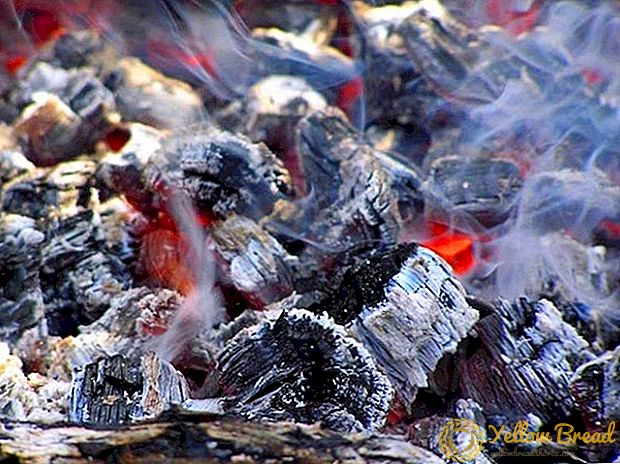
- Aloe juice Processing the material with this substance, you not only enrich it, improve germination and strengthen seedlings, but also pickle. Thus, this procedure also includes decontamination. The aloe plant, which is more than 3 years old, needs to cut a couple of lower leaves and, wrapping it in paper, put it in the refrigerator for at least a week.Then the leaves need to chop, get the juice out of them, and diluting it in equal proportions with water at room temperature, put the seeds in bags. Sustain relies from 6 to 18 hours.
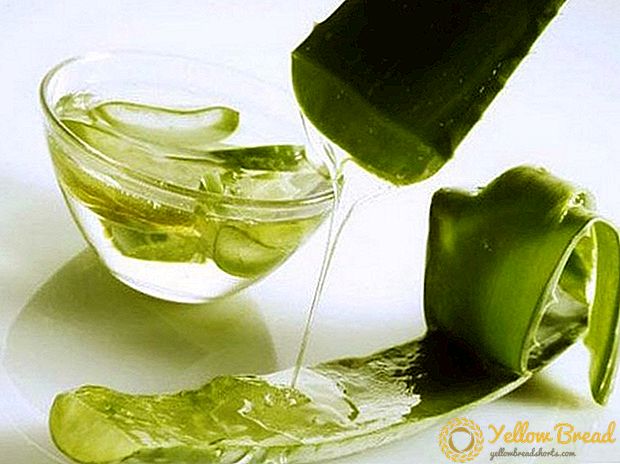
- Shop preparations. Using them, you need to follow the recommendations of the instructions.
Soak
How to soak pepper seeds in order to give the germs the very best for the future of vigorous growth and active fruiting? To increase the likelihood of germination, they should be saturated with moisture, swell.
Pre-treated seeds are placed on a substrate and filled with water so that it barely covers them. Maintain raw pepper should be two days in a warm place, during this time should be 2-3 times to change the water. After swelling - germinate or sow. 
Many gardeners know how to soak the seeds of peppers and simultaneously germinate them before planting. To do this, put the seeds in an envelope, made of a square of dilapidated natural fabric, moistened with water and placed in some kind of container. Excess water from the tank is drained or wetted and, covered with a film, put in a warm place.
Water for this purpose is better to use thawed or spring water. If there is no access to the spring, the snow has not fallen, and all that you have is tap water, you have to turn it into melted water. For this, the settled water is placed in the freezer for a couple of hours, the middle, which has not frozen, is poured, and the ice formed on the walls is allowed to melt. After that, the water is carefully drained, leaving the sediment in the tank. Merged melted water is used for germination.
In the tank, where the wet envelopes with seeds are located, there should not be any excess water, but if the vessel is large, you can put a “tank” in the form of a wetted piece of foam rubber or several cotton disks. 
There is no definite answer as to how long the pepper seeds should be soaked before planting.Every day, you have to look under the film, sprinkle envelopes with melt water and check if they have started to hatch.
After waiting for pecking, each live seed is placed in a seedling box with tweezers. A day later, another revision is carried out, the animated are selected and disembarked. Not germinated seeds are not used - they will be a bit confusing.
Bubbling
Nature is designed so that the seed does not undergo external influences and does not deteriorate for a long time. This is due to the protective layer located on their surface. But the same layer prevents rapid germination. 
One of the technologies that reduce the time of emergence - bubbling. This is the effect of oxygen on the seeds of a particular species for a specific time. Using this method allows you to get shoots a week earlier.
To carry out the bubbling procedure at home, you need to have a tank with a volume of about a liter and an aquarium compressor.
The jar is filled with water at a temperature of 20 ° C, slightly more than half, the compressor and the seeds are placed there, no more than ¼ of the volume of water.
The compressor turns on, the material is processed. Seeds of pepper will be required for this day.
After the procedure, the seeds are dried to a friable state and, if it is not possible to immediately plant them, they are finally dried, laid out in one layer on paper in a ventilated room away from the sun's rays. 
Hardening planting material
Hardening the seeds makes sense if you intend to sow them under the film a week earlier than the due time. If quenching is used for seed in seedlings, then the seedlings themselves will need to be hardened for a long time.
Hardened and heated seeds are subjected to quenching.They are soaked before swelling in warm water, mixed with sand or wet sawdust and kept for three days at a temperature of 20-25 ° C, ensuring that the water does not evaporate completely and the material does not dry out. After that, they are placed in a fridge or taken out on the street and kept for three more days at a temperature of about zero.
Sawdust used for the hardening process should be boiled for 2-3 minutes, river sand should be calcined in the oven.
Careful preparation of seed material will be fully paid for by early strong and amicable shoots that are resistant to the negative impact, and, most importantly, abundant harvest, obtained in the shortest possible time.



